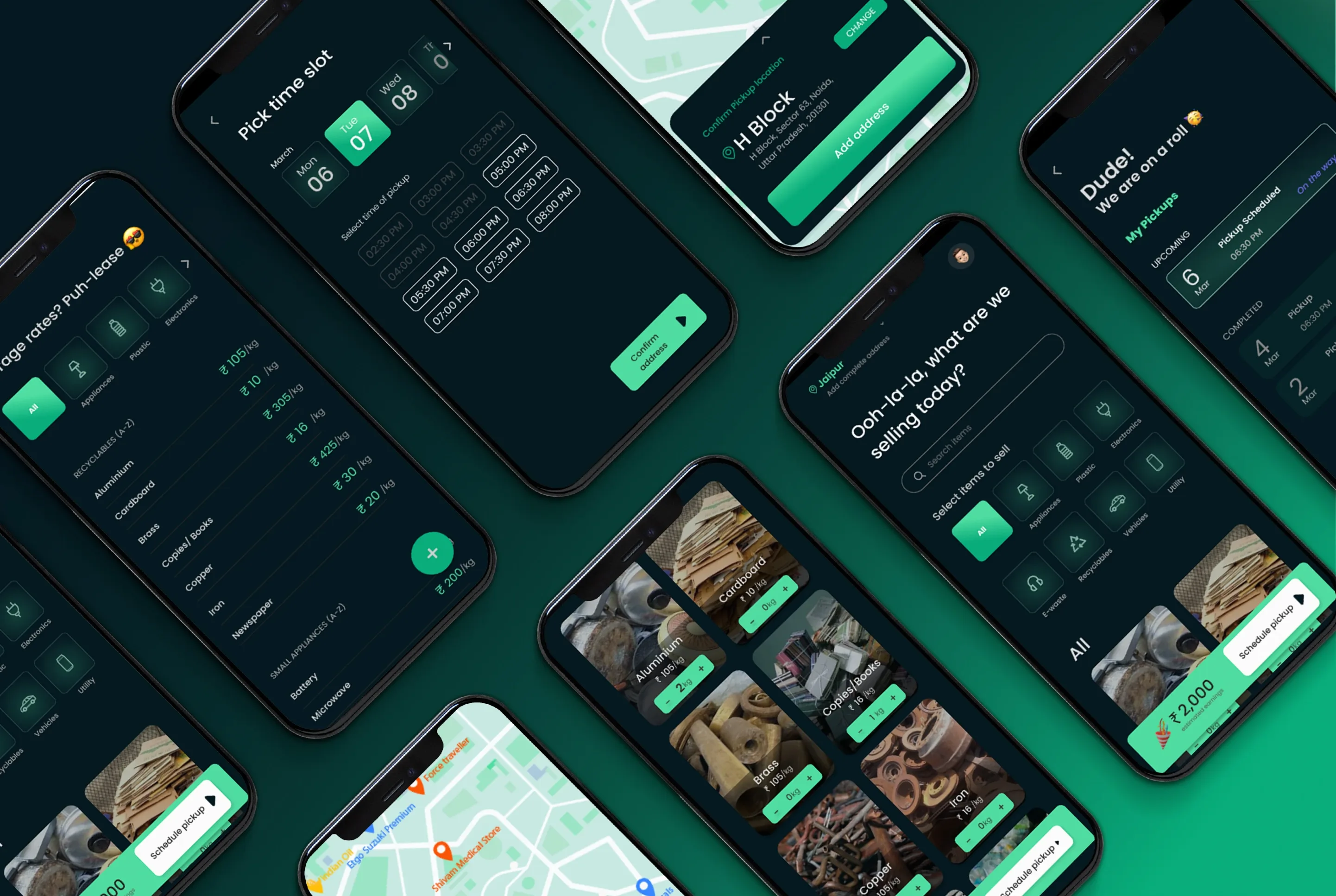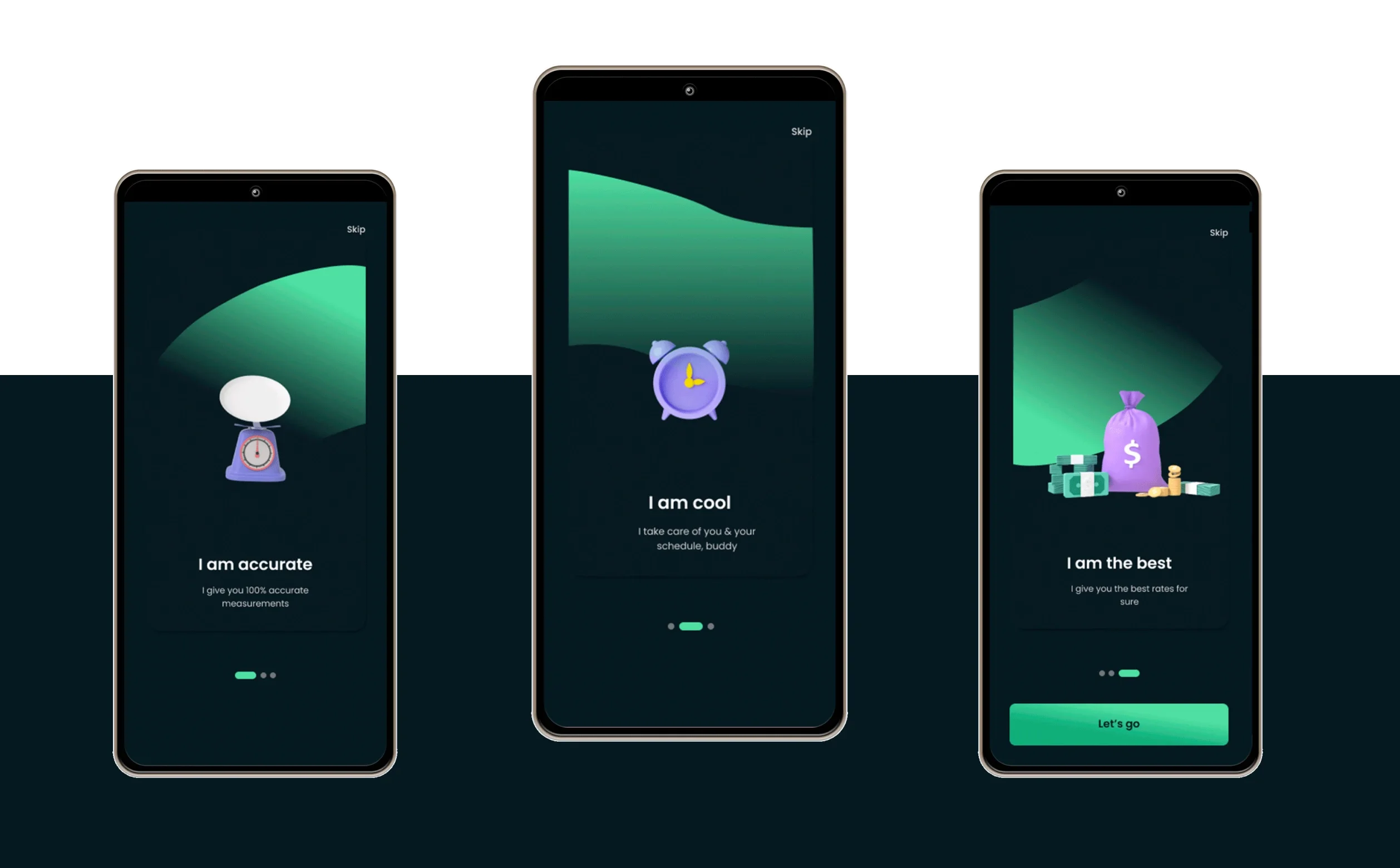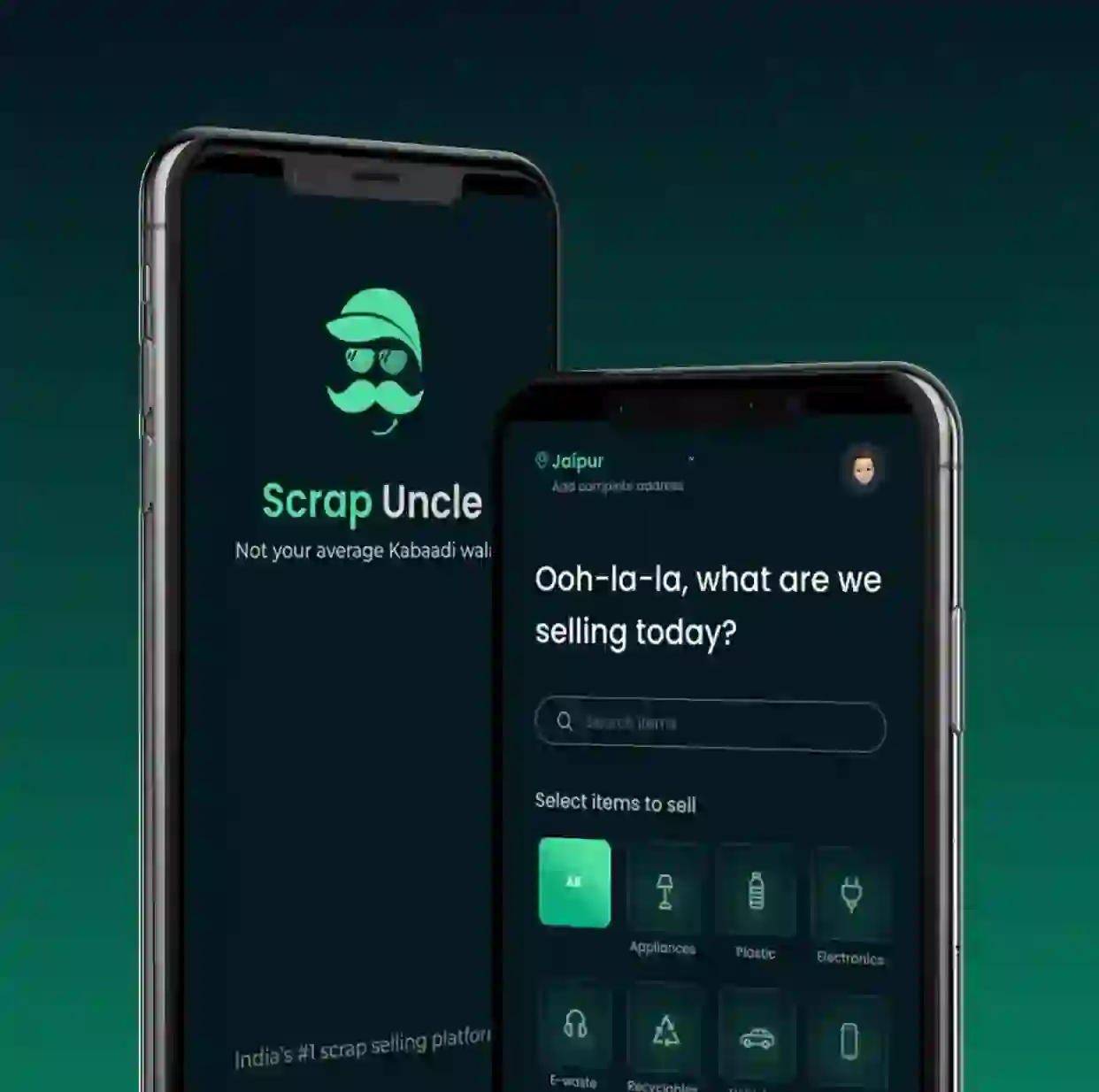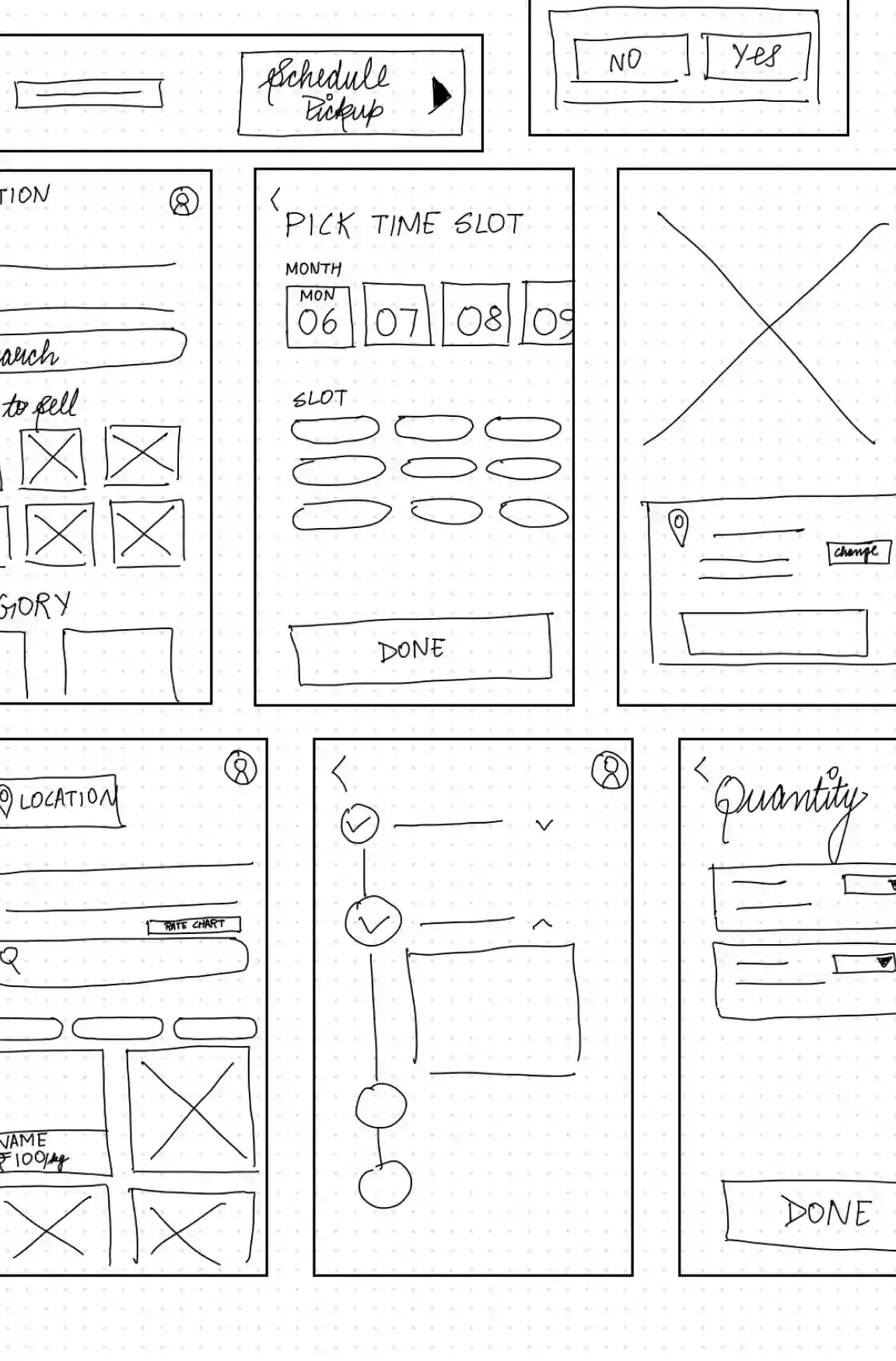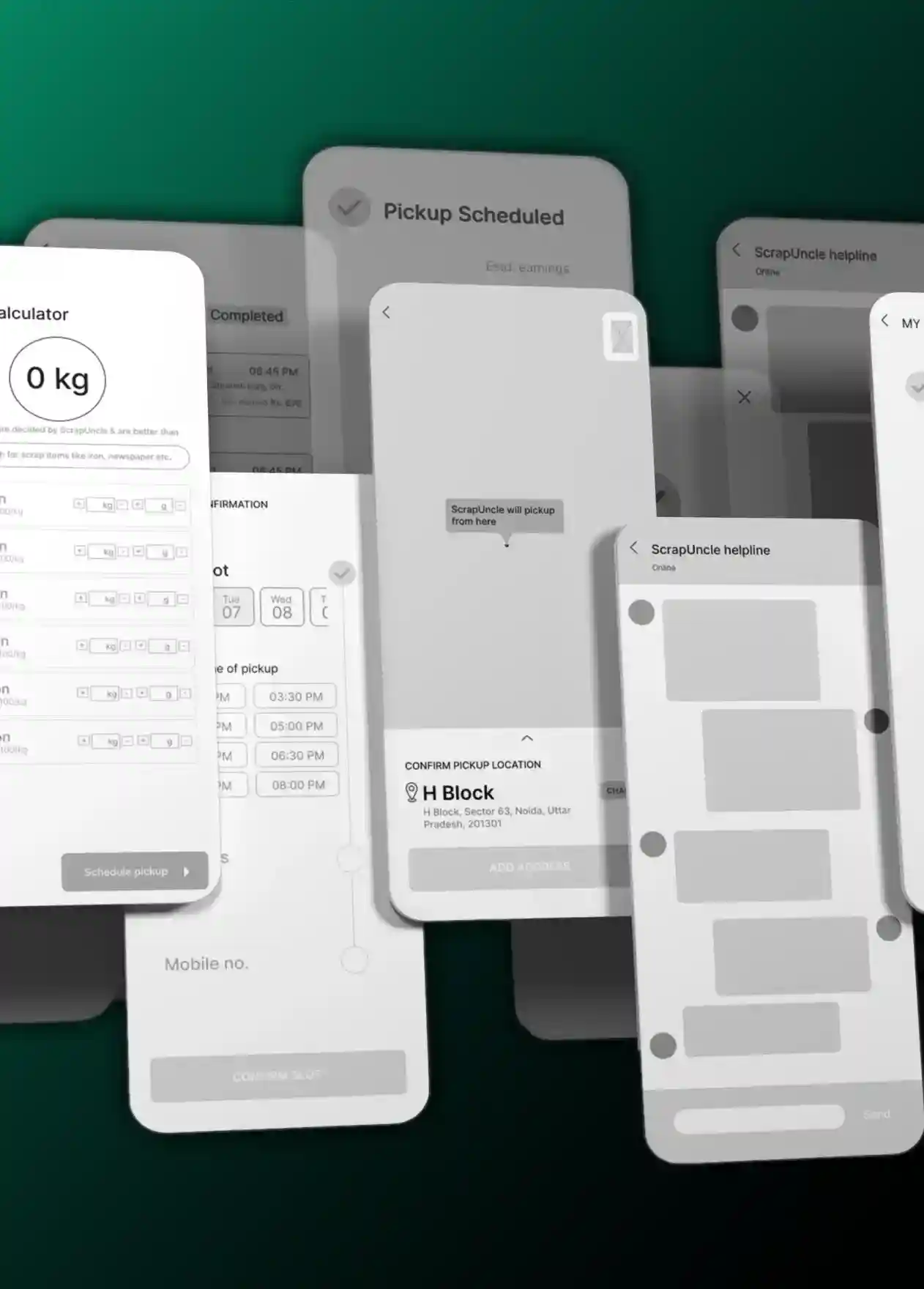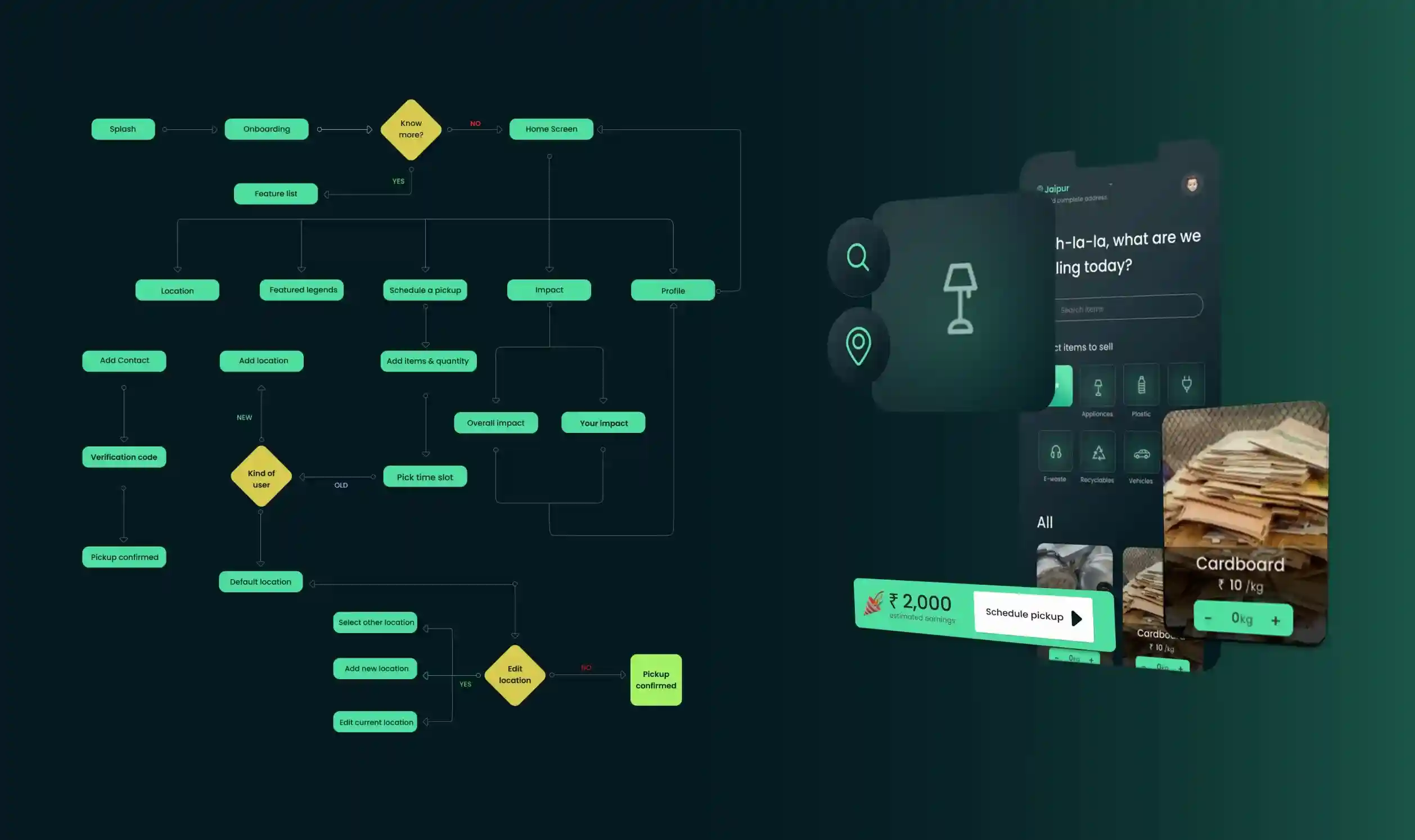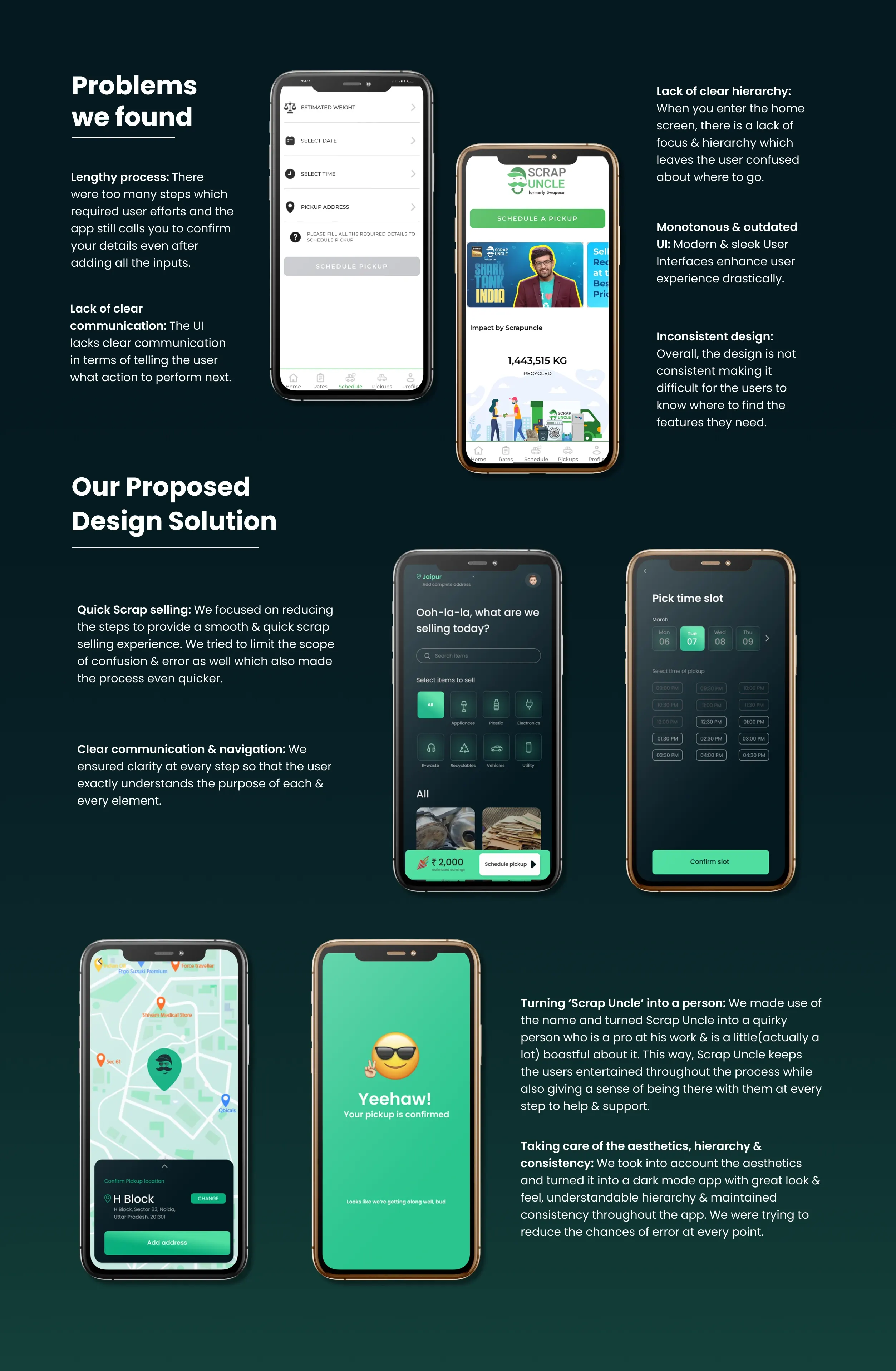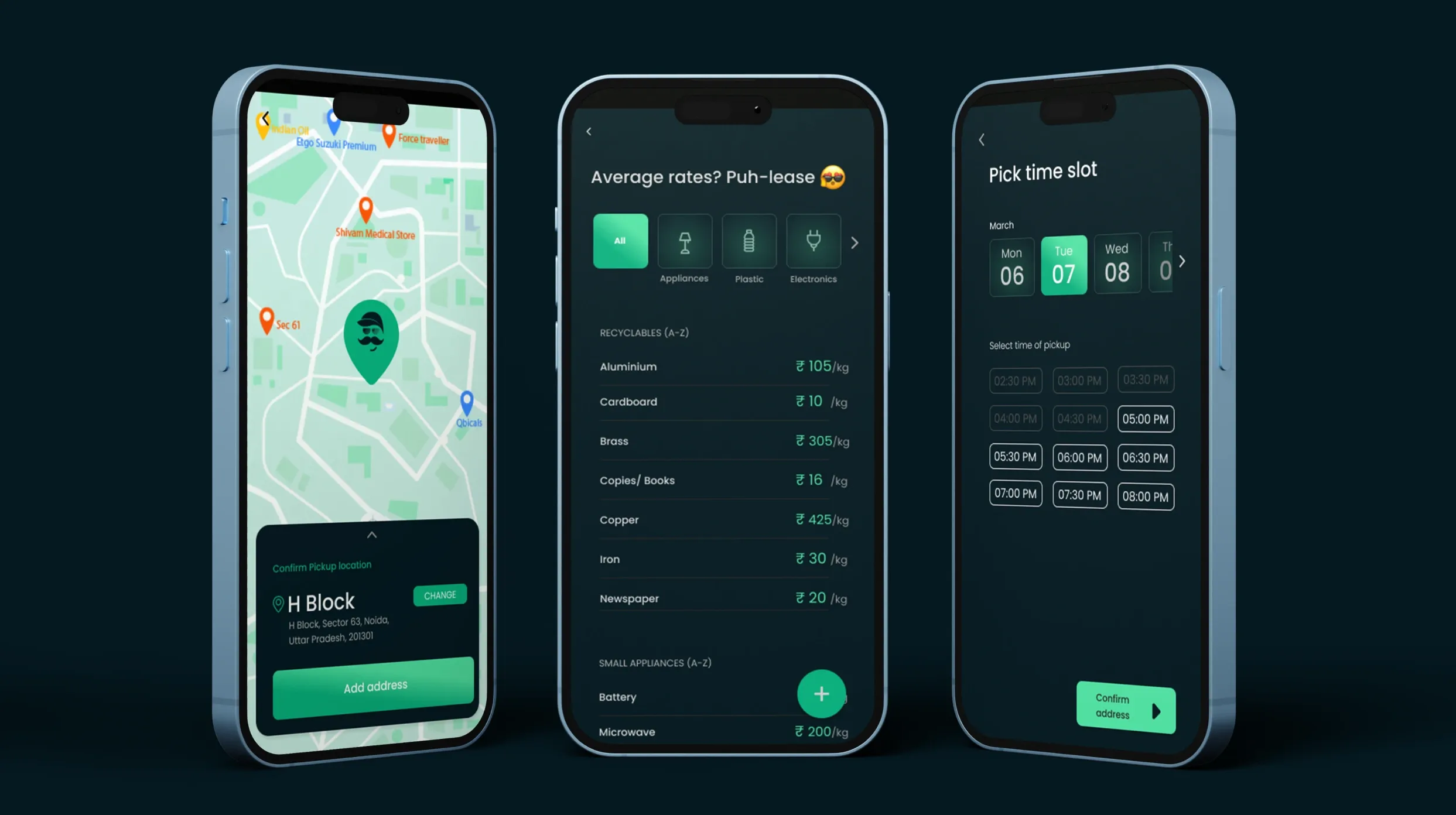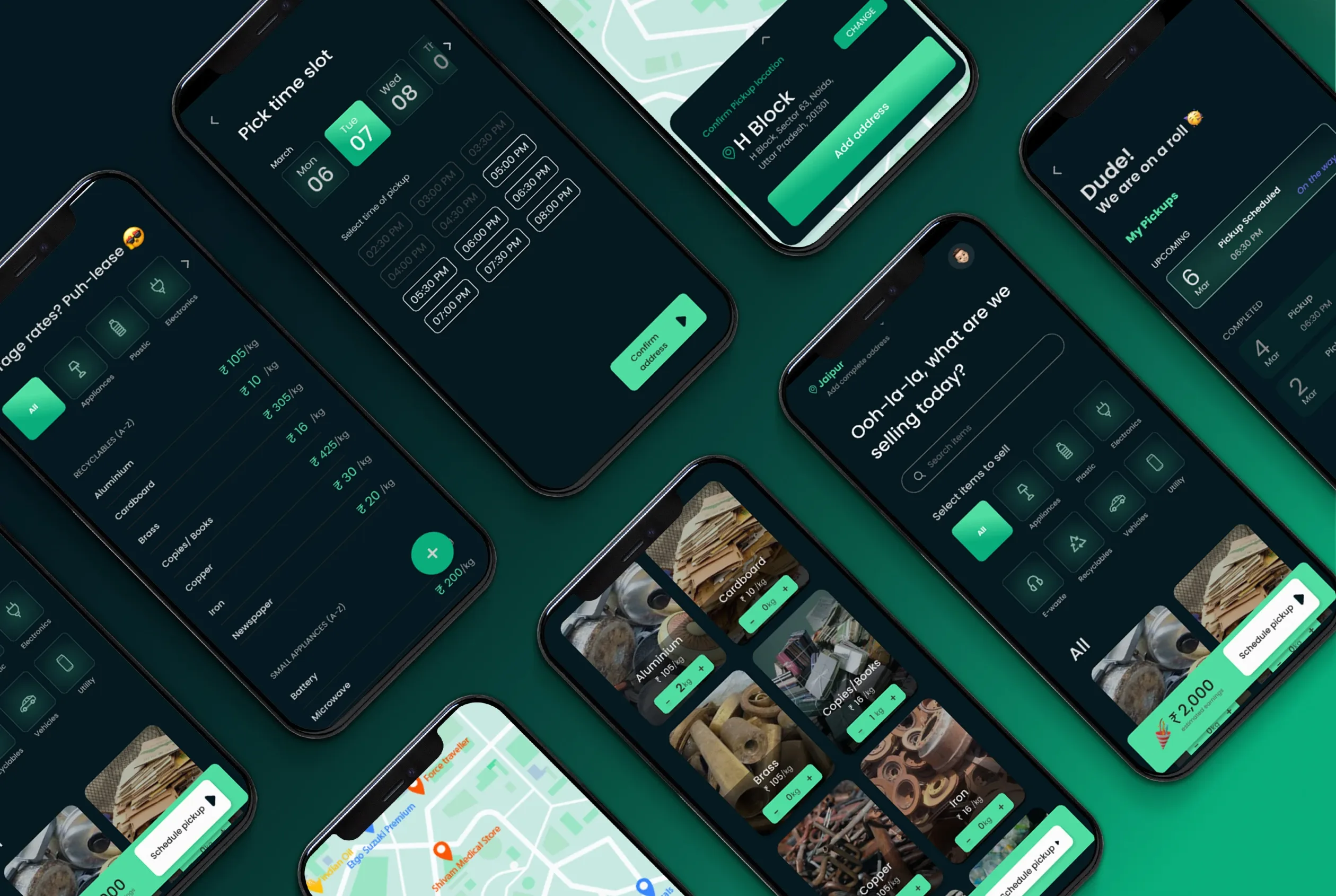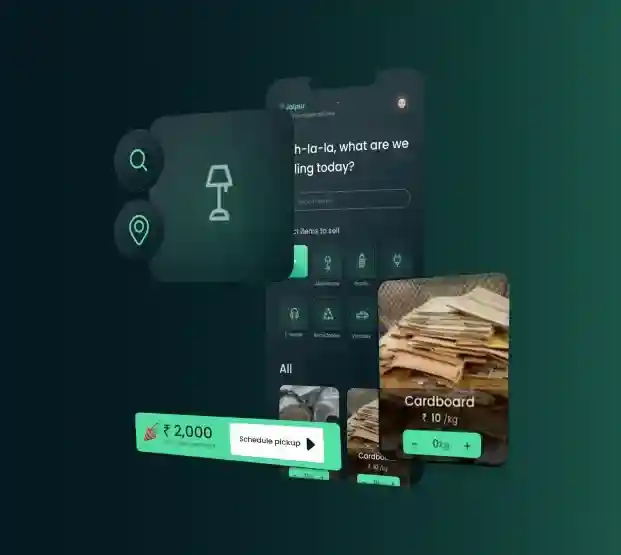Pankaj Mishra, a busy business analyst from Noida, is a recycling enthusiast who loves using the app to sell scrap. But scheduling pickups was a hassle due to his busy schedule. He is tech-savvy and expects an app that is easy to use, provides quick results, and has a modern design. To add to that, he also wants to know his earnings before scheduling a pickup and desires a trustable app that offers support throughout the journey.
This is the journey of solving the scrap-selling problems for Pankaj and others who struggle with scrap management.
View portfolio
Problem Statement
The challenge is redesigning a scrap-selling application into a unique and exciting experience while maintaining simplicity and functionality. The project aims to enhance the experience of selling scrap by making it faster, smoother, and more engaging.
The Design Process
Discovery
Problem identification through user research and competitor analysis.
Desk research by analyzing existing data such as the current app, website, and LinkedIn page of the company.
User interviews to understand user problems and cognitive patterns.
Analysis
Brainstorming and ideation to identify critical issues.
User flow and information architecture to streamline the user experience.
Paper sketches to explore design ideas.
Design
Hi-fi wireframes to visualize the interface.
Visual design and style guide for aesthetics and consistency.
Prototype to create an interactive experience.
User testing to gather feedback and validate design decisions.
User Research
User interviews were conducted to understand the frequency and process of selling scrap, problems faced, and user expectations from the app.
Problems Identified
Confusing and lengthy scrap selling process.
Lack of clear communication and navigation.
Monotonous and outdated UI.
Inconsistent design.
Proposed Design Solutions:
Quick scrap selling process with reduced steps and minimizing confusion.
Clear communication and navigation for improved usability.
Turning 'Scrap Uncle' into a quirky personality to engage users.
Aesthetically pleasing dark mode with a clear hierarchy and consistent design to enhance the user experience.
Define
Creation of user personas and empathy maps to guide design decisions.
Ideate
User flow was created to map out the user journey and identify pain points.
Conclusion
Wireframes were created to visualize the interface.
Style guide developed for consistent aesthetics.
Our proposed design solutions
Wireframes were created to visualize the interface.
Design
In conclusion, the redesigned scrap-selling application aims to provide users a faster, smoother, and more engaging experience. Through a user-centered design process that involved problem identification, user research, analysis, and design iterations, we proposed solutions to address the identified problems. The final design incorporates a quick and easy scrap-selling process, clear communication, an engaging persona, and a modern UI with consistent aesthetics.
User testing and feedback were crucial in validating the design decisions and ensuring that the app meets the needs of the users while offering an enjoyable experience.
View portfolio
